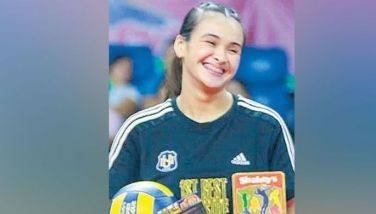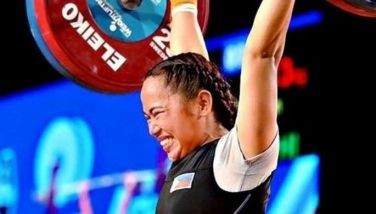Plasmo ‘die’ uhmm? False-Ipa-room? (Conclusion)
September 15, 2005 | 12:00am
The second challenge is the problem of polymorphism. Because of the primitive need of the parasite to survive inside the host and with that, avoid being detected and eliminated by the immune system, its antigenic proteins needs to change form. How to overcome this? Select an antigenic protein from a specific stage (in lieu of the first challenge) that is the most conserved. How do you determine conservation? Align and analyze multiple protein sequences of the antigen (provided that the sequences are known), then determine the specific regions that are highly variable or highly conserved. Elucidate the secondary structure of the protein to determine the presence of alpha helices, beta sheets or coils. Better yet, if the 3D structure is known, compare it with a protein of a similar 3D structure. Somehow the structure is related to the functional characteristic of the protein. Warning! Do not be fooled by the ease of words, this part of the challenge is highly tedious and requires lots of mental and visual power. (Trust me, I know. I have been through it.)
The third challenge is the problem of species and strain. Malaria is caused by other Plasmodium species aside from the P. falciparum. These species are P. vivax, P. malariae and P. ovale (though P. falciparum and P. vivax are the species that contribute mostly to the malaria burden) and each type has its own strains. To propose a vaccine that would be effective for malaria, all species and strains should be taken into consideration. The difficulty of the challenge is attributed to the difference in the manner of infection of individual species. How do we propose to answer this problem? Why not formulate the vaccine in such a way that the antigenic proteins to be targeted are not specific for only one species but a combination of antigens representing each type much like a cocktail drink?
My interest in malaria began when our professor, Dr. Eduardo Padlan, asked us to propose a targeting molecule against any type of disease for our MS 397B exam on "Natural Products for Molecular Targeting." We had to find evidence for feasibility and data for proof for our chosen disease. I chose to study malaria and target the disease through the Plasmodium falciparum Erythrocyte Membrane Protein1. My MS-mate, Charie, asked me, why not cancer? It got me thinking; yes, why not target cancer? Maybe because oncology is such a glamorous field of research and I chose to study a less glamorous field. Or maybe because I was infected with dengue a few months ago and the irony of life was unforgettable, but I figured, I am simply here for the challenge. I even considered to pursuing malaria as my masteral thesis in Biochemistry, hoping to elucidate the structure and characteristic binding of the CIDR1 region to CD36 (of course, with the help of my mentors, Dr. Gisela Concepcion and Dr. Eduardo Padlan of the Marine Science Institute, UP Diliman), setting aside thoughts that the combination of immunology, molecular biology, biochemistry and parasitology would impose a degree of difficulty that my mind cannot comprehend, resulting in the downfall of my graduate studies. I guess, I believe in taking risks and following where the urge of science leads me.
Let me end by explaining my title.
"Plasmo" — The main causative agent of malaria will be impossible to eradicate causing even more people to "die."
"Uhmm?" My answer is "false" because I believe that with the strength and knowledge of malarial research we have at present and with the hope of future accomplishments and discoveries, a vaccine is possible to dig out just like a puzzle waiting to be solved.
"I" advice to leave "pa-room" for faith, conviction and hard-core research work.
Who knows, we might outsmart this little bugger.
Combine all the words together Plasmo-die-uhmm False-I-pa-room. Doesn’t it sound like Plasmodium falciparum. So much for the Yugoslavian tongue-twister.
BrandSpace Articles
<
>
- Latest
Latest
Latest
September 30, 2024 - 8:00am
September 30, 2024 - 8:00am
September 26, 2024 - 2:00pm
September 26, 2024 - 2:00pm
September 3, 2024 - 1:00pm
September 3, 2024 - 1:00pm
Recommended






























